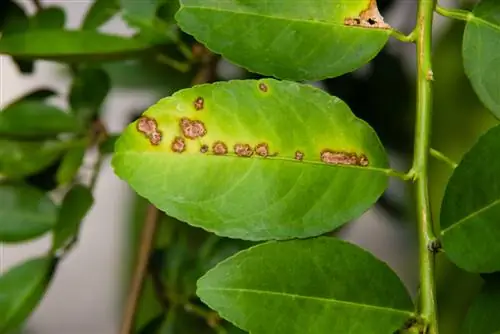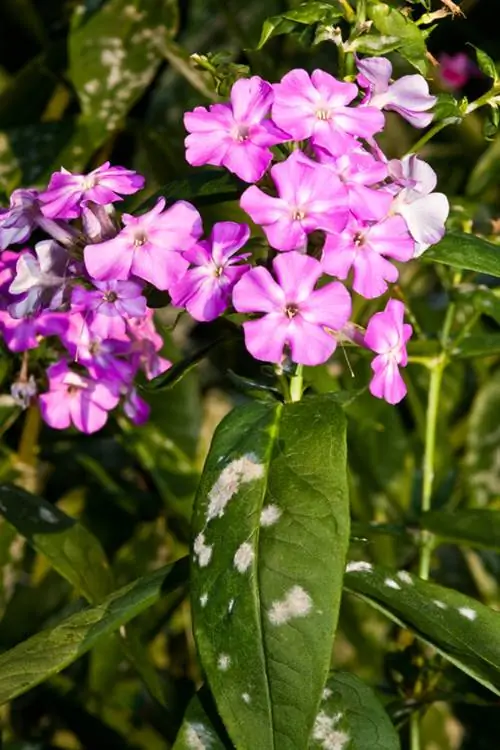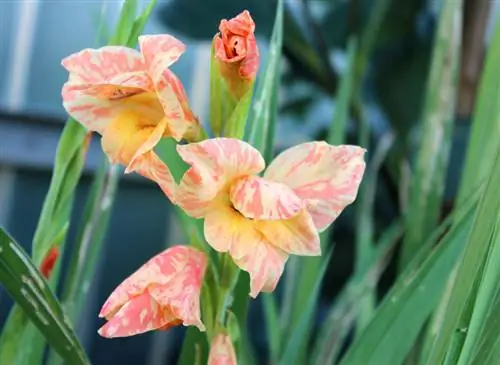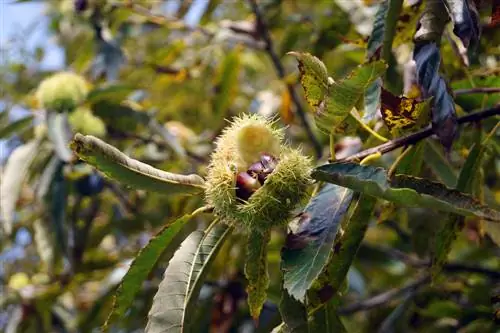- Author admin [email protected].
- Public 2023-12-16 16:46.
- Last modified 2025-01-23 11:22.
If a citrus tree changes its appearance in an unattractive way, it is no longer as decorative. Not to mention that the plant is clearly not doing well. But where pathogens are prematurely suspected, it could just be a case of care errors. This should be checked as soon as possible.
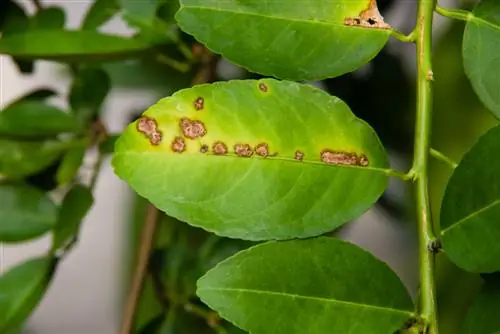
What diseases and care errors occur in citrus plants?
Illnesses or care errors can lead to noticeable changes in citrus plants. These include yellow leaf veins (iron deficiency), yellowed leaf tips (magnesium deficiency), limp young leaves (zinc deficiency), incorrect watering and overwintering errors. Fungal diseases such as sooty mold and anthracnose can also occur and require treatment with fungicides.
Symptoms of deficiency due to incorrect fertilization
All types of citrus require precise care so that they grow he althily. In particular, fertilization must be carried out regularly, with an optimal combination of nutrients. Due to ignorance or lack of time, this point of care is often not fulfilled satisfactorily. The subsequent changes in external appearance are considered symptoms of an illness.
- Leaves with yellow veins are a sign of iron deficiency (chlorosis)
- the pH value of the soil can also be too high (ideal is 5.5-6.5)
- If there is a magnesium deficiency, only the tips of the leaves turn yellow
- limp young leaves appear when there is a zinc deficiency
Damage caused by wetness and dryness
No citrus plant should be left wet to prevent its fine roots from rotting. It must not dry out either. Therefore, soil for citrus plants must be permeable and able to store water at the same time. Watering is carried out as needed and only when the upper third of the soil is dry. It is advisable to spray the plant with water on warm days.
If yellow leaves appear on the citrus plant or they curl up, you should check the irrigation and correct it if necessary.
Tip
Use a moisture meter for your citrus plants (€39.00 on Amazon) so that you don't accidentally overwater or dry out the plants.
Errors during wintering
Citrus plants need to be overwintered, but it is not always easy to find suitable winter quarters. Under no circumstances should the pot be too cold, otherwise the roots will be damaged. Yellowing of leaves and leaf fall occur. Place the pot on insulating Styrofoam or coconut mat.
Infectious diseases
Of course, there are also some “real” diseases that can plague a citrus plant. First and foremost, these are diseases caused by fungal pathogens that spread primarily on weakened plants. While sooty mold appears with a black coating, the common anthracnose can be recognized by the following symptoms.
- Leaves show brown, round spots
- often accompanied by semicircular, dark groups of spores
- As the progress progresses, the leaves fall off
- the plant must be treated with a fungicide

